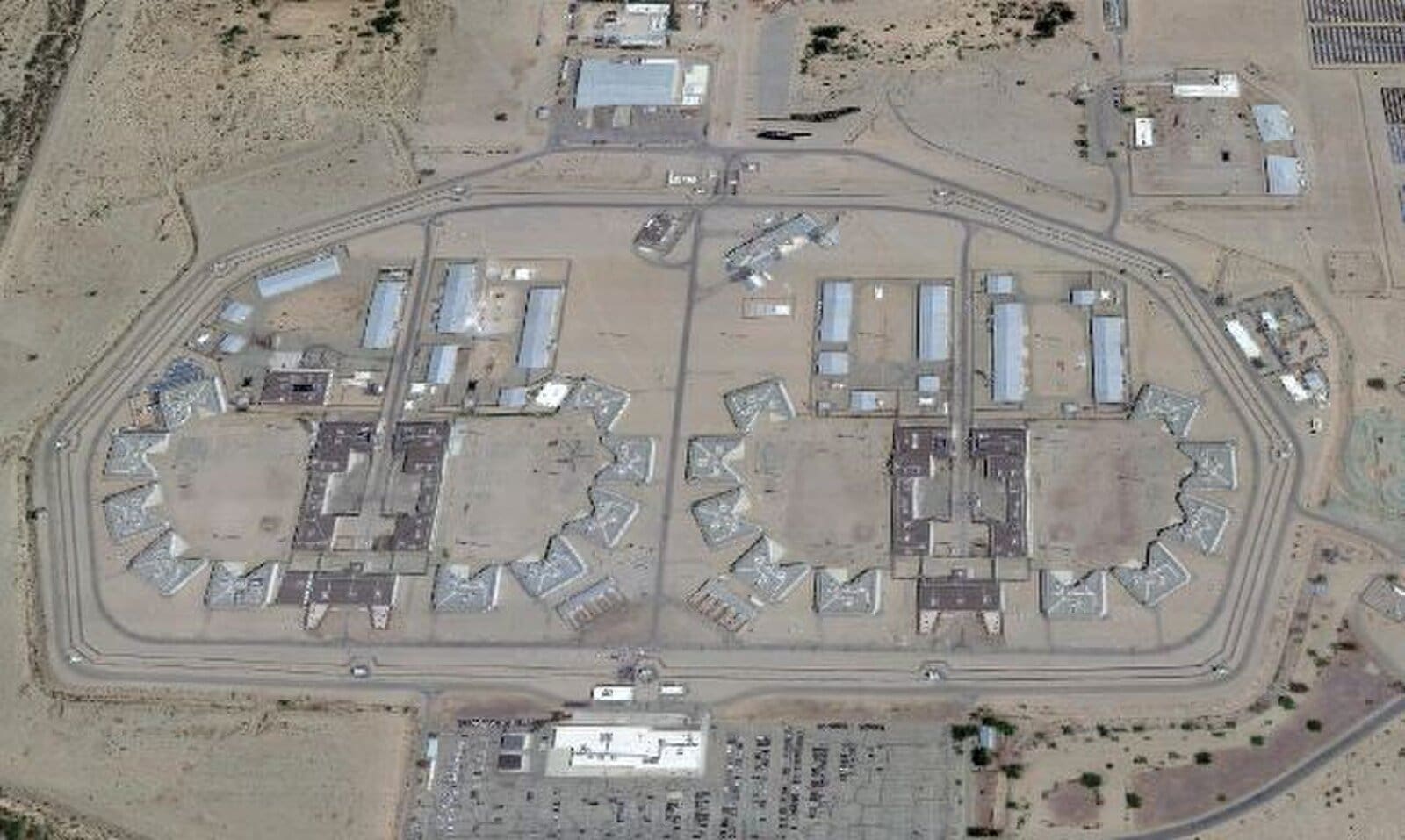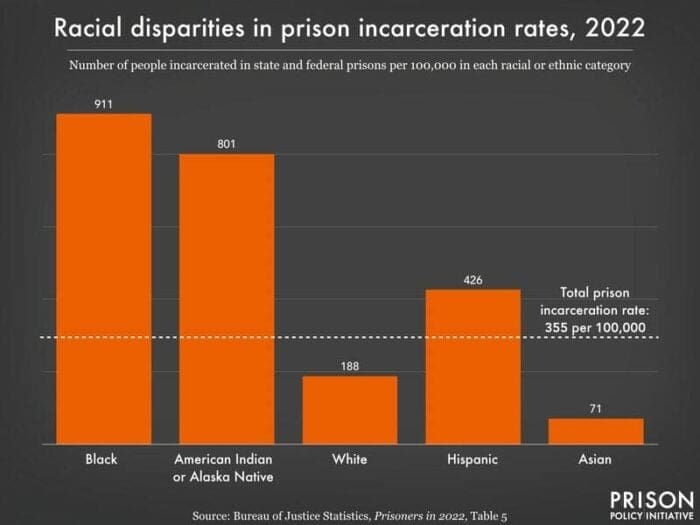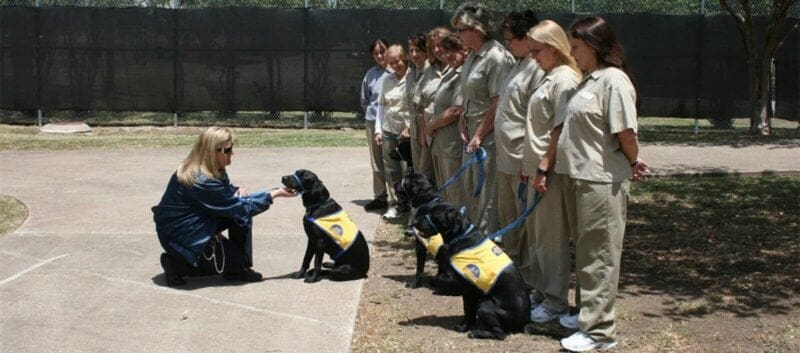As Americans, we should be proud of the fact that our country is number one in the world when it comes to 2 devastating metrics. Mass incarceration is one, and mass shootings, the other.
So what has led to our success of reaching the top in mass incarceration? Do we have more crime here? No, that’s not it.
Continue reading to learn more about America’s history when it comes to the incarceration of its population and the recent staggering increase in mass incarceration rates.
The United States has long been known for its high incarceration rates, but the situation has reached staggering proportions in recent decades. With over 2 million people behind bars, the United States boasts the highest incarceration rate in the world, a dubious distinction that has far-reaching consequences. This alarming trend has been fueled by a significant increase in the number of individuals serving time for non-violent offenses, particularly in the wake of the “War on Drugs” and the implementation of harsh mandatory minimum sentences.

The sheer scale of the incarceration epidemic in the United States is overwhelming. The country’s prison population has grown exponentially, with the number of individuals behind bars skyrocketing over the past few decades. This dramatic rise in incarceration rates has been driven by a complex web of factors, including the aggressive pursuit of the “War on Drugs” and the imposition of draconian mandatory minimum sentences for a wide range of offenses. As a result, the United States has become a global outlier, with a prison population that far exceeds that of other developed nations, even those with comparable crime rates.
The United States is technically under corporate rule. Corporations give members of Congress millions of dollars in exchange for their vote for or against legislation. As a brief example, the gun lobby donates the most money to members of the Republican party. That’s why they always vote against any bill that would implement even the smallest measure of reform when it comes to guns.
We live in a country built on the economic system of Capitalism. This is one of the driving forces behind high incarceration rates in the U.S. Private prisons exist to make a profit. The more people housed in one of those prisons, the more money the owner and shareholders will make. Prisons also use the power of money to influence politicians to implement policies that will create a pipeline of inmates flowing into their prisons.

Impact of rising incarceration rates
The staggering increase in incarceration rates has had a profound impact on American society, with far-reaching consequences that extend beyond the walls of the prison system. The disproportionate impact on marginalized communities, particularly racial minorities, has highlighted the systemic biases and inequalities that permeate the criminal justice system. The economic burden of mass incarceration, with billions of dollars being spent annually on maintaining the vast prison system, has also taken a significant toll on the nation’s resources, diverting funds from other critical areas such as education, healthcare, and social services.
Topics We’ll Cover
- The incarceration rate in America has seen a staggering rise in recent years.
- Factors such as mandatory minimum sentencing and the war on drugs have contributed to the incarceration epidemic.
- Marginalized communities, particularly people of color, are disproportionately impacted by mass incarceration.
- Mass incarceration places a significant economic burden on society, with costs for taxpayers and families.
- Recidivism and rehabilitation challenges contribute to the revolving door of incarceration, highlighting the need for effective solutions.
Factors Contributing to the Incarceration Epidemic

The rise in incarceration rates in the United States can be attributed to a complex interplay of factors, chief among them the “War on Drugs” and the implementation of harsh mandatory minimum sentences. The “War on Drugs,” a decades-long campaign launched in the 1970s, has been widely criticized for its heavy-handed approach and disproportionate impact on marginalized communities. The aggressive enforcement of drug laws, coupled with the imposition of mandatory minimum sentences, has led to a dramatic increase in the number of individuals serving time for non-violent drug-related offenses.
Alongside the “War on Drugs,” socioeconomic factors have also played a significant role in the incarceration epidemic. Poverty, lack of access to education and job opportunities, and mental health issues have all been identified as contributing factors to the growing number of individuals in the criminal justice system. These underlying societal challenges often push individuals towards criminal behavior, as they struggle to meet their basic needs and lack the resources and support necessary to make positive choices. The failure to address these root causes has perpetuated a vicious cycle, with marginalized communities bearing the brunt of the incarceration crisis.
The complex interplay of these factors has created a perfect storm, leading to the staggering rise in incarceration rates that the United States now faces. The reliance on harsh punitive measures, coupled with the neglect of the underlying social and economic issues, has resulted in a criminal justice system that is ill-equipped to address the root causes of crime and effectively rehabilitate and reintegrate offenders back into society. As the incarceration crisis continues to escalate, it has become increasingly clear that a fundamental shift in approach is necessary to address this pressing issue.

The Disproportionate Impact on Marginalized Communities
The incarceration epidemic in the United States has had a disproportionate impact on marginalized communities, particularly African Americans and Hispanics. These racial minorities are vastly overrepresented in the prison population, a stark reflection of the systemic biases and inequalities that permeate the criminal justice system.
The impact of this disproportionate representation extends far beyond the individual. The incarceration of a family member can have devastating consequences for the entire community, affecting the social and economic fabric of these marginalized neighborhoods. Children of incarcerated parents often face a higher risk of poverty, poor educational outcomes, and social stigma, perpetuating the cycle of disadvantage and increasing the likelihood of future involvement in the criminal justice system. The ripple effects of mass incarceration on these communities are far-reaching and long-lasting, undermining their ability to thrive and eroding the foundations of social and economic stability.

The Economic Burden of Mass Incarceration
The rise in incarceration rates in the United States has not only had a profound social impact but has also placed a significant economic burden on the nation. The cost of maintaining the vast prison system is truly astronomical, with billions of dollars being spent annually on incarceration.
The direct costs of the prison system are unbelievable. From the construction and maintenance of correctional facilities to the salaries of prison staff and the provision of basic services, the financial resources required to sustain the incarceration system are truly mind-boggling.
The United States spends $81 billion every year on mass incarceration. Massive amounts of money are spent on keeping people locked up, but barely any money available to assist them after they’re released.
This vicious cycle leads them to re-offend, landing them back behind bars. Remember the private prison pipeline mentioned in the beginning?
However, the economic burden of mass incarceration extends far beyond the direct costs of the prison system. The indirect costs, such as the loss of productivity and the impact on families and communities, further exacerbate the financial toll. When individuals are incarcerated, they are removed from the workforce, leading to a loss of economic output and potential tax revenue. Additionally, the incarceration of a family member can have devastating consequences for the financial stability of the household, leading to increased reliance on social welfare programs and further straining the nation’s resources.
The economic impact of mass incarceration is not limited to the immediate costs of the prison system. The long-term consequences of incarceration, such as the difficulty in finding employment and the social stigma associated with a criminal record, can have a lasting impact on the economic prospects of formerly incarcerated individuals and their families. This, in turn, perpetuates the cycle of disadvantage and further exacerbates the economic burden on society as a whole.

The Revolving Door: Recidivism and Rehabilitation Challenges
| Year | Number of Incarcerated Individuals | Incarceration Rate per 100,000 |
|---|---|---|
| 1970 | 357,292 | 161 |
| 1980 | 501,886 | 220 |
| 1990 | 1,179,200 | 523 |
| 2000 | 1,937,821 | 731 |
| 2010 | 2,266,832 | 730 |
The incarceration epidemic in the United States is not only characterized by the unprecedented rise in the number of individuals behind bars but also by the high rates of recidivism, with many formerly incarcerated individuals returning to prison after their release. This revolving door of incarceration highlights the pressing need for more effective rehabilitation and reintegration programs within the criminal justice system.

The high recidivism rates in the United States are a testament to the shortcomings of the current approach to criminal justice. Despite the significant resources invested in the prison system, the failure to provide adequate support and opportunities for rehabilitation and reintegration has resulted in a system that often fails to address the underlying issues that led to criminal behavior in the first place. This lack of effective rehabilitation programs, coupled with the social and economic challenges faced by formerly incarcerated individuals upon their release, has perpetuated a cycle of recidivism that continues to strain the criminal justice system and the broader society—Another driver of the private prison pipeline.
Addressing the challenges of recidivism and rehabilitation requires a fundamental shift in the approach to criminal justice. The provision of mental health services, job training, and educational opportunities within the prison system is crucial to equipping incarcerated individuals with the tools and resources necessary for successful reintegration into society. Furthermore, the development of comprehensive support systems and community-based programs that assist formerly incarcerated individuals in finding employment, housing, and social connections can play a vital role in breaking the cycle of recidivism and enabling successful reintegration.
The purpose of prison is not only to punish, but to prepare and bolster the ability of people for a successful reintegration to society. Our focus being only on the punitive aspect of our prisons leads to people returning again and again. In some cases they become institutionalized without the necessary coping skills or abilities to lead a successful, happy life outside the prison system. If the people so concerned about crime rates put more of their focus and money into the rehabilitation aspect of the prison system, we would see a significant drop in the crime rates of this country.
Norway’s Successful Prison System
The “prisons” in Norway look more like vacation homes. Their approach to prioritizing rehabilitation over punishment has paid off in terms of their plummeting recidivism rates. Norway’s model is built on a foundation of treating people with respect—recognizing that while their behavior was wrong, it doesn’t make them any less deserving of humane treatment. In the United States, people in prison are treated with disdain, disrespect, and cruelty. The treatment does little to foster the self-confudence and desire to “do better.”

The revolving door of incarceration is a complex and multifaceted issue that demands a holistic and compassionate approach to criminal justice reform. By addressing the underlying causes of criminal behavior, investing in effective rehabilitation programs, and providing the necessary support for successful reintegration, the United States can take meaningful steps towards reducing recidivism and breaking the cycle of mass incarceration and the private prison pipeline that has plagued the nation for far too long.









